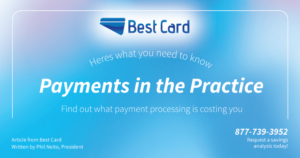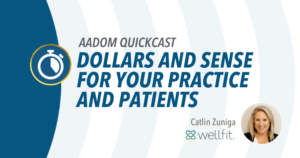The Importance of Collecting Day of Service

Everyone wants to have great production numbers. But what is most important is collecting on all the services provided on the day of service. You can “produce” all day, but in the end, if you do not collect the money there is nothing left in the bank to pay the bills. Most of our practices are small businesses, not big hospitals with large amounts of capital.
“Send me a bill”
Gone are the days of “send them a bill.” Having a solid financial policy is critical for healthy financials. While we may have to re-train our long-time patients to understand this new office policy, it will only benefit the practice in the long run.
While we would love to all be fee-for-service and collect every cent on the day of treatment, unfortunately, most of us are not quite there yet. To keep our financials at a healthy level, our practice provides treatment plans when the condition is diagnosed before scheduling the procedure(s). Then we review it with the patient so that they understand their coinsurance is due the day treatment is completed. Over the last 10 years, this approach brought our collection rate up to the industry standard of 98-99%.
The other aspect of keeping your accounts receivables in check involves the insurance payments. We cannot receive an insurance payment on the day of service, so it is essential to utilize practices that minimize the time between treatment and when payments are received. We’re at an advantage with technology to help lessen the time between service and payment dates, utilizing electronic claims, attachments, and even electronic fund transfers. r payment.
The Importance of Collecting on the Day of Service
If you have not been collecting very many day-of-service payments, how do you clean up the accounts receivable mess and re-train patients (and employees)? The first step is having a clear financial policy in place; go through it with your patients as they come in, so they are aware of the policy change. Then start with the aging accounts receivable (AR) report; work from oldest balances to new, and aging insurance claims to current.
We are not perfect with our estimations, but we try to be as accurate as possible to give the patients a good idea of their out-of-pocket costs. However, sometimes there is still a portion left over. Sending statements right away and then offering the patient a simple way to pay the balance helps improve the collection process.
Help your patients make paying their balances easier by offering an online portal or text-to-pay links. We live in a world of technology and busy schedules when people have access to these options 24/7; it’s much more convenient.
Those who require payment arrangements instead of offering in-office payment plans (we are not the bank, after all) have at least one or more options for third-party financing. There are many choices for third-party financing plans; while choosing what works well for your patients and practice, my best advice is to utilize a company that pays funds to the office immediately versus over time. Always research the payouts, to make sure it will still be beneficial to the practice! Offering financing options to the patients helps them say “yes” while making sure the practice is getting paid.
In the end, shifting to the practice of collecting at the time of service will increase your bottom line.
About the Author

Kristina Bekkum, MAADOM is the business manager for Valley Dental in Onalaska, WI. Having begun her career in dentistry as a dental assistant, she has spent the last 10 years in administration. Kristina is a lifetime AADOM member, earning her fellowship designation (FAADOM) in 2020 and Master’s distinction in 2023. When not in the office, she enjoys spending time with her husband and two sons.








